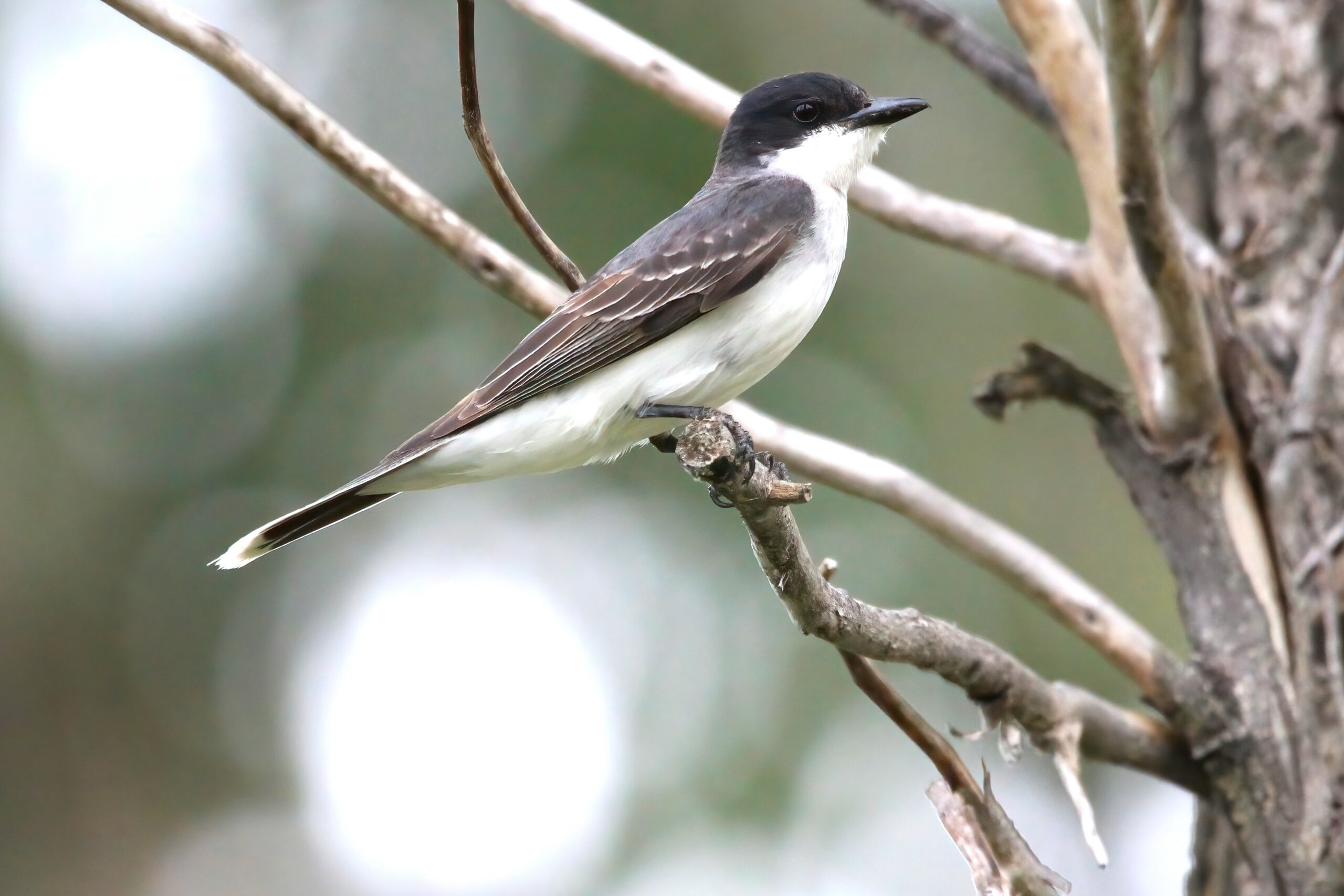Not all kings are tyrants, with perhaps the exception of the Eastern Kingbird, a member of the Tyrannus Tyrannus genus. Arriving in Calgary and area about mid-May, this aggressive flycatcher family member brings terror to every insect species. Specific delectable targets consist of any flying insect hovering innocently over grassy fields or crops. There is indeed joy and curiosity when watching the Eastern Kingbird, spring from its perch, usually a wire fence, fence post or positioned out on a dead tree limb. In milliseconds the kingbird seems suspended in the air, grabs the insect and returns to the same perch.
Although insects are subject to swift attacks, the Eastern Kingbird is not shy about defending its territory. Bird watchers have witnessed attacks by this kingbird on crows, herons, hawks and blue jays. Prime territory for this species are open fields, pastures, grasslands and wetlands. Add in fencing with access to crop fields or open grass covered areas, this kingbird will enjoy a food supply to raise its young.
Although I have seen a few Eastern Kingbirds at the north end of Lake Chestermere, perched in the dead treetops near Crystal Pond, birdwatchers are potentially in for a kingbird treat at Wyndham-Carseland Provincial Park. In a recent trip to the day use area, just east of the irrigation weir on the Bow River, numerous kingbirds took advantage of notable insect hatches, dragonflies, damselflies and both the yellow and white butterflies hovering over a crop field adjacent to the park. Wonderful fence lines and large aspen trees provide suitable perches to launch insect attacks as well as protect the juveniles waiting potentially eagerly for their next meal. It was a pleasure during the August long weekend to stay seated at a picnic table and enjoy the kingbirds capturing insects then fly up into the aspen treetops to feed the hungry teens. With a well established population of Eastern Kingbirds at Wyndham-Carseland Provincial Park, birders and lovers of nature will appreciate this species. Leaving the park, we witnessed three kingbirds swooping in on a Blue Jay, ensuring it would not come near the juveniles perched on a nearby tree branch.
Smaller than a robin, the kingbird sports a head of black feathers, a dark gray hued back, a white chest and belly, all ending with a white tipped square tail, the “king” hides its crown. Concealed more often than not, a crest of red, orange or yellow feathers adds the final touch to the kingbird. If one is fortunate enough to catch the male courting a suitable mate, the chance of seeing the colorful crest of the crown increases. Kingbird pairs will return to the same nesting areas each year, almost guaranteeing continued observation for both the casua land avid birder.
Like so many wonderful species, the Eastern Kingbird makes a long migratory flight late in the summer from Alberta down to South America, using the Amazon forest as a home base during our winter months. Knowing there is an Eastern Kingbird, you may wonder whether or not there is a Western Kingbird. It’s Alberta’s good fortune to be home to the Western Kingbird, a story to be shared another day.
The King of Birds Comes From the East?

In response to Canada's Online News Act and Meta (Facebook and Instagram) removing access to Canada's local news from their platforms, Anchor Media Inc encourages you to get your news directly from your trusted source by bookmarking this site and downloading the Rogue Radio App. Send your news tips, story ideas, pictures, and videos to info@anchormedia.ca.




